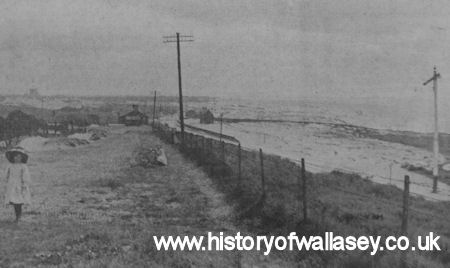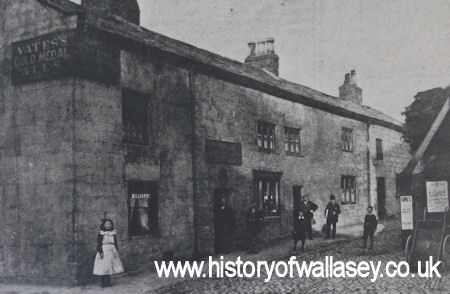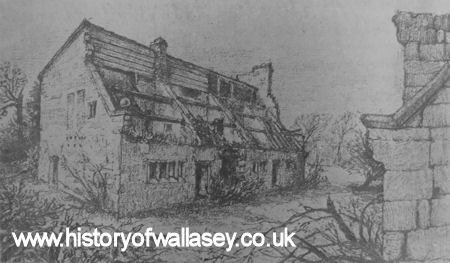It is an odds-on bet that Wallasey was one of the first places in the country to establish horse racing. There was the sport of kings on a five-mile course down by the Leasowe sands. The ‘Wallasey Stakes’, with Black Slave and Smiling Molly romping home to 200 guinea prizes. Stables and smithies. High purses and big gambling. All of it a long time ago, almost 250 years’ distance away.
There was racing near Leasowe Castle as early as the 1500s, but it was in the late 1600s that it became widely popular.
Where the golf courses are today was the fine stretch of sand which allowed ‘gentlemen and others oft to appoint great matches and venture no small sums in trying the swiftness of their horses.”
In 1723 the rich Cheshire gentry formed a sweepstake of considerable value known as the Wallasey Stakes. It was run at Leasowe for many years. It was run at Leasowe for many years.
It is said that the encroachment by the sea so affected the course that the race was removed to Newmarket and finally to Epsom, where it was run under the title of the Derby Cup, the modest origin of today’s Derby.
According to old maps, the local course ran from Wallasey Village towards Leasowe Castle and back again, finishing near the present Wallasey Station.
 |
Races were held on a five-mile course that went from Wallasey Village to Leasowe and back. This photograph shows the miles of open sand that was in the area many years ago. |
The races were run in heats. A win could only be obtained by the first horse leading throughout the last 240 yards.
It is evident from records that the course was not at all like what we understand nowadays as a race course. There was no attempt at an enclosure.
The rule was that unless the first horse passed the post 240 yards ahead of the next one the race was not considered settled, and the horses were obliged to run it again.
If the winner again failed to lead by the required length, it was run a third time, after which the horse that had won two times out of three got the prize.
A race run three times was a severe strain on most horses, and it is not surprising that not infrequently did horses drop dead during the progress of the event.
It is believed that at one time the most considerable stake in the kingdom was run locally. The names of the winner give some idea of the importance of the events.
The Duke of Devonshire won in 1725, and Lord Molyneux transferred his training stable to Wallasey.
Lord Gower was a winner in 1723 and 1730, the Duke of Ancaster in 1728, and Sir Richard Grosvenor in 1724, 1726 and in 1727.
Lord Molyneux’s ‘Black Horse’ was a great favourite, and legend has it that it was after that the Black Horse Inn (now Sheridans), Wallasey Village, was named. The original inn was a popular rendezvous for the racing fraternity.
 |
Closely connected with racing, the old Black Horse Inn, Wallasey Village, looked like this just over a century ago. The notice on the right announces a football match between Harrowby and Bebington St. Andrew's. |
Racing went on into the late 1700s. The last recorded were in 1792.
The Leasowe races had their own stables in Wallasey Village. They stood in what was then known as Jockey Lane.
Inscriptions were cut on the big oak door of the largest. This door was housed for many years in Liverpool Museum, until German bombers blitzed it in the Second World War.
The horseshoes of four winners were nailed to the door, with names and dates.
The stables were sold in 1785 and eventually became known as Sandfield Hall. They fell into decay and were demolished in 1895.
 |
This old drawing of the ruined remains of the old Wallasey racing stables, down to Wallasey Village, was done over 120 years ago. They stood at the corner of Jockey Lane, now Sandcliffe Road. |
Account books and records give the horses and the wagers. Horses like Jugler, Black Slave, Tripod and Smiling Molly. Wagers in gold and silver, in ‘ye sum of 200 guineas’,
The Wallasey of the time was a place of scattered hamlets. There were cottages, miles of moor, and sand dunes.
The coast was desolate and wild. Windswept sandhills and coarse grass.
Men of the area had three main ways of making a living – by working on the land, by fishing, or by dealing in a spot of contraband.
It was the Wallasey of Old Mother redcap, friend of sailors and wreckers in her cottage by the shore of Egremont.
Read More : Wallasey Village
Featured sites
- Non Gamstop Casinos
- Casino Not On Gamstop
- UK Casinos Not On Gamstop
- Non Gamstop Casinos UK
- Sites Not On Gamstop
- Sites Not On Gamstop
- Casinos Not On Gamstop
- Casinos Not On Gamstop
- Casinos Not On Gamstop
- Non Gamstop Casino UK
- Casinos Not On Gamstop
- Non Gamstop Casino
- UK Online Casinos Not On Gamstop
- UK Online Casinos Not On Gamstop
- Non Gamstop Casinos
- Casino Sites Not On Gamstop
- Casinos Not On Gamstop
- Casinos Not On Gamstop
- Best Betting Sites
- Casinos Not On Gamstop
- Gambling Sites Not On Gamstop
- Betting Sites That Are Not On Gamstop
- Non Gamstop Casinos UK
- UK Online Casinos Not On Gamstop